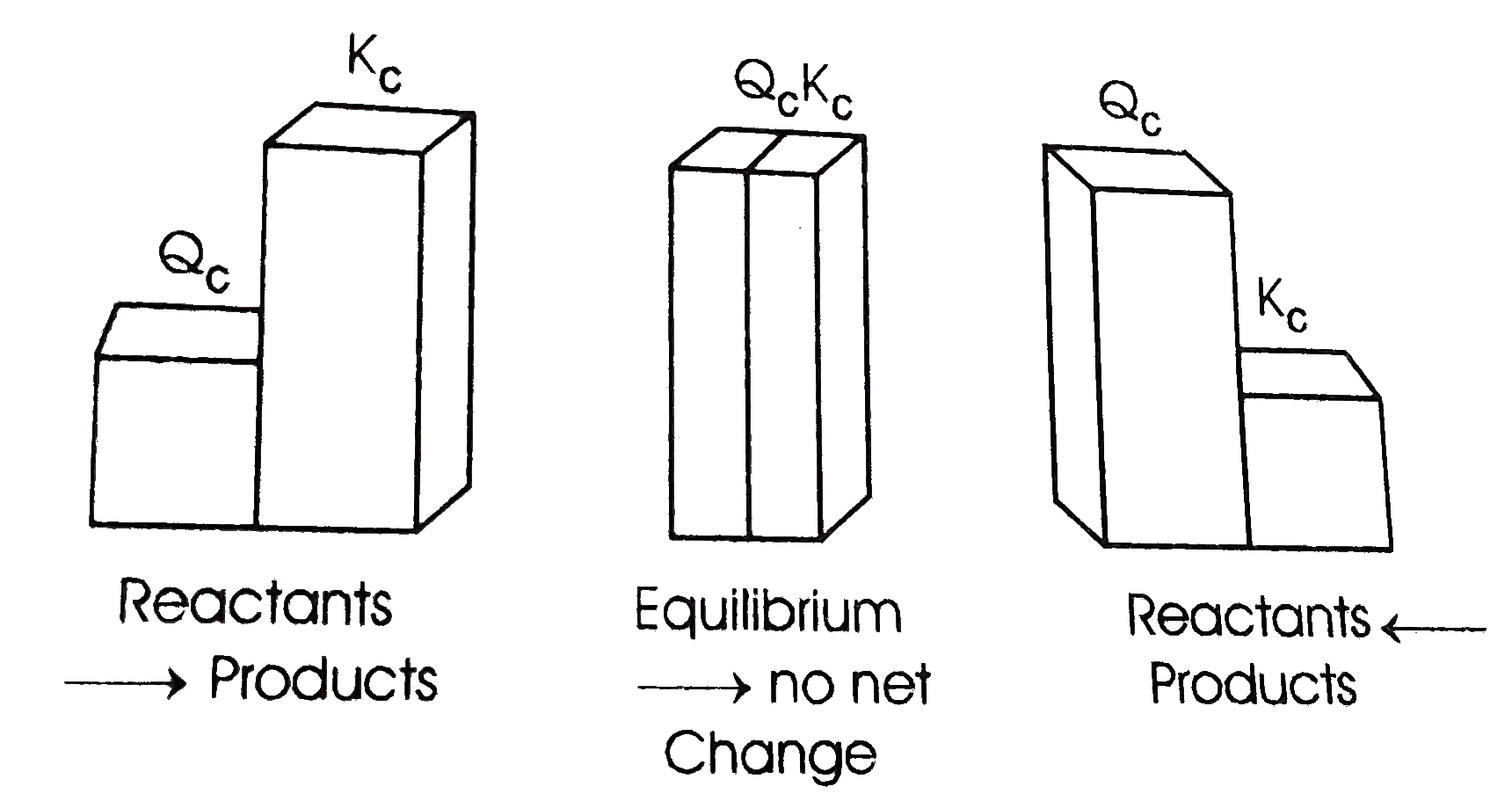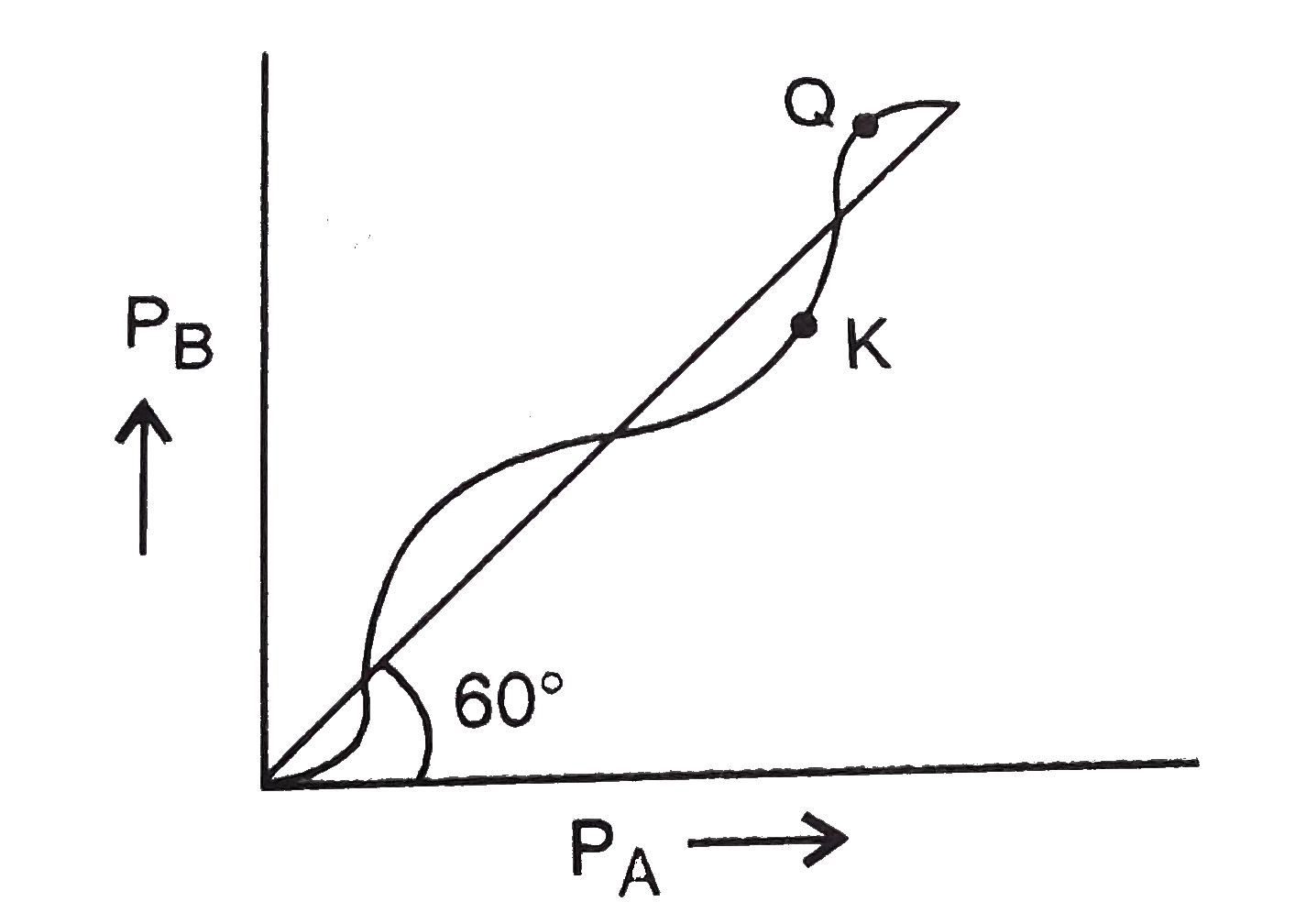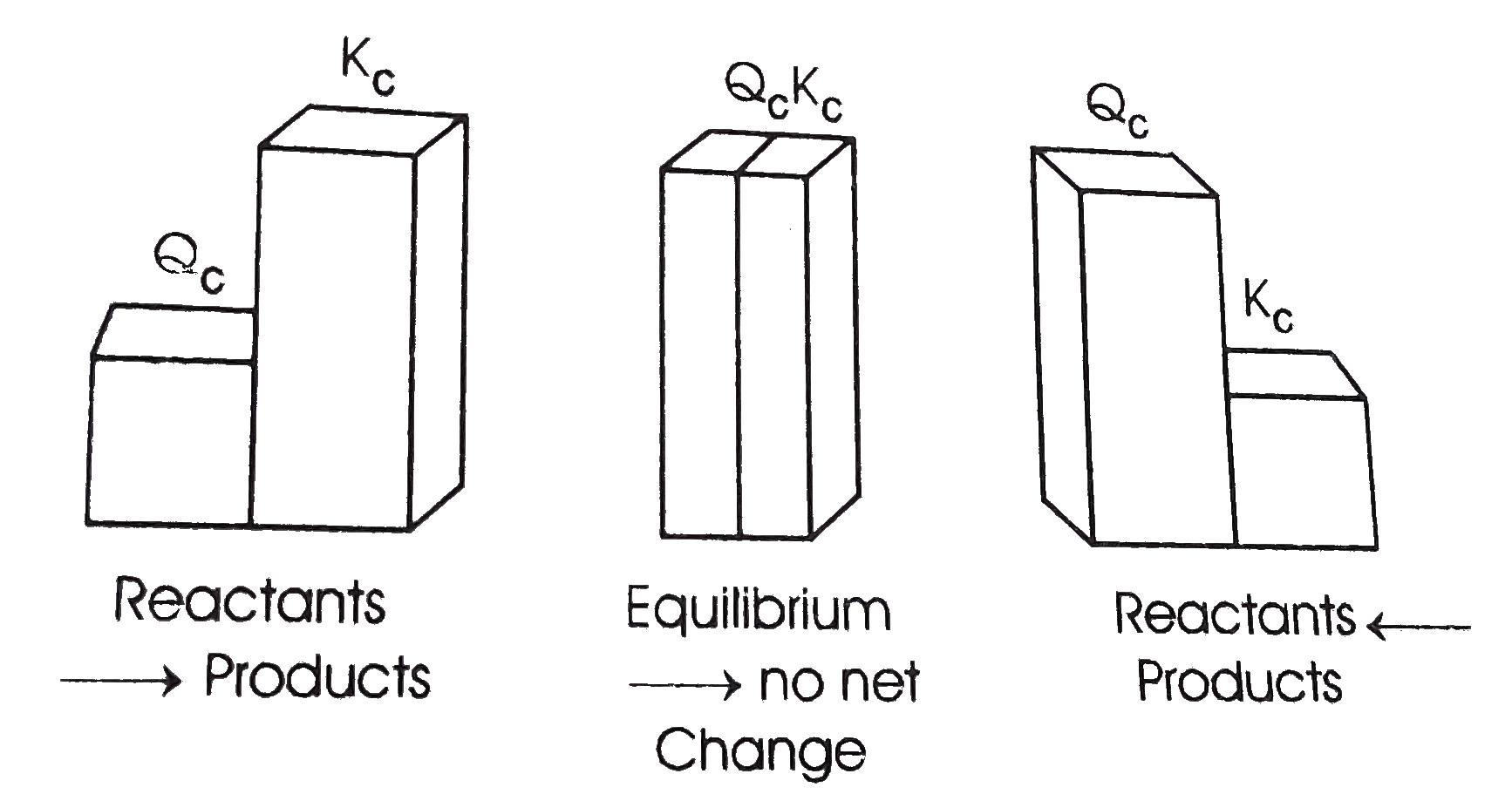The concentration quotient of a reversible reaction is Q, and the equilibrium constant is K. What do youconclude if (i) Q=K(ii)Q>K(iii)Q<K?
To analyze the relationship between the concentration quotient (Q) and the equilibrium constant (K) for a reversible reaction, we can draw conclusions based on the values of Q in relation to K. Here's a step-by-step breakdown of the conclusions for the three scenarios:
1. Understanding Q and K:
- Q (concentration quotient) represents the ratio of the concentrations of products to reactants at any point in time.
- K (equilibrium constant) represents the ratio of the concentrations of products to reactants when the system is at equilibrium.
2. Case (i): Q = K:
- When Q equals K, it indicates that the system is at equilibrium.
- This means the rate of the forward reaction (reactants converting to products) is equal to the rate of the backward reaction (products converting back to reactants).
- Conclusion: The reaction is at equilibrium.
3. Case (ii): Q > K:
- When Q is greater than K, it indicates that the concentration of products is higher than what is present at equilibrium.
- To restore equilibrium, the reaction will shift to the left (backward direction), favoring the formation of reactants.
- Conclusion: The reaction will shift to the left (backward reaction) to reach equilibrium.
4. Case (iii): Q < K:
- When Q is less than K, it indicates that the concentration of products is lower than what is present at equilibrium.
- To restore equilibrium, the reaction will shift to the right (forward direction), favoring the formation of products.
- Conclusion: The reaction will shift to the right (forward reaction) to reach equilibrium.
Summary of Conclusions:
- Q = K: The reaction is at equilibrium.
- Q > K: The reaction shifts to the left (backward reaction).
- Q < K: The reaction shifts to the right (forward reaction).
- Q (concentration quotient) represents the ratio of the concentrations of products to reactants at any point in time.
- K (equilibrium constant) represents the ratio of the concentrations of products to reactants when the system is at equilibrium.
- When Q equals K, it indicates that the system is at equilibrium.
- This means the rate of the forward reaction (reactants converting to products) is equal to the rate of the backward reaction (products converting back to reactants).
- Conclusion: The reaction is at equilibrium.
- When Q is greater than K, it indicates that the concentration of products is higher than what is present at equilibrium.
- To restore equilibrium, the reaction will shift to the left (backward direction), favoring the formation of reactants.
- Conclusion: The reaction will shift to the left (backward reaction) to reach equilibrium.
- When Q is less than K, it indicates that the concentration of products is lower than what is present at equilibrium.
- To restore equilibrium, the reaction will shift to the right (forward direction), favoring the formation of products.
- Conclusion: The reaction will shift to the right (forward reaction) to reach equilibrium.
- Q = K: The reaction is at equilibrium.
- Q > K: The reaction shifts to the left (backward reaction).
- Q < K: The reaction shifts to the right (forward reaction).
Topper's Solved these Questions
- BOOK - PRADEEPCHAPTER - EQUILIBRIUM IN PHYSICAL AND CHEMICAL PROCESSESEXERCISE - NCERT QUESTIONS AND EXERCISES WITH ANSWERS34videos
EQUILIBRIUM IN PHYSICAL AND CHEMICAL PROCESSES
- BOOK - PRADEEPCHAPTER - EQUILIBRIUM IN PHYSICAL AND CHEMICAL PROCESSESEXERCISE - ADDITIONAL QUESTIONS (VERY SHORT ANSWER QUESTIONS)14videos
EQUILIBRIUM IN PHYSICAL AND CHEMICAL PROCESSES
- BOOK - PRADEEPCHAPTER - EQUILIBRIUM IN PHYSICAL AND CHEMICAL PROCESSESEXERCISE - TEST YOUR GRIP (II. FILL IN THE BLANKS)16videos
EQUILIBRIUM IN PHYSICAL AND CHEMICAL PROCESSES
- BOOK - PRADEEPCHAPTER - EQUILIBRIUMEXERCISE - Competition Focus (VIII. Assertion-Reason Type Questions)16videos
EQUILIBRIUM
- BOOK - PRADEEPCHAPTER - HYDROCARBONSEXERCISE - Competition Focus (JEE(main and advanced)/Medical Entrance) VIII. ASSERTION - REASON TYPE QUESTIONS31videos
HYDROCARBONS
Similar Questions
Assertion : If reaction quotient, Qc for a particular reaction is greater than Kc the reaction will proceed in the direction of reactants.
Reason : Reaction quotient is defined in the same way as the equilibrium constant Kc except that the concentrations in Qc are not necessarily equilibrium values.View SolutionAssertion:- The reaction quotient Q, has the same presentation form as the equilibrium constant K and Q is evaluated using any given concentrations of the species involved in the reaction, and not necesssarily equilibrium concenetrations.
Reason:- If the numerical value of Q is not the same as the value of equilibrium constant, that time reaction will never proceed.View Solution
Knowledge Check
- Question 1 - Select One
The reaction quotient (Q) at equilibrium is
A=1B=KC>KD<K - Question 2 - Select One
For a hypothetical reaction
4A+5B⇔4P+6Q . The equilibrium constant Kc has units.AmolL−1Bmol−1LC(molL−1)−2Dunit less - Question 3 - Select One
In a reversible reaction, if the concentration of reactants are doubles, the equilibrium constant K will:
Achange to 1/4KBchange to 1/2KCchange to 2KDremain the same
Assertion: The reaction quotient, Q has the same form as the equilibrium constant Keq, and is evaluated using any given concentrations of the species involved in the reaction, and not necessarily equilibrium constrations.
Reason: If the numerical value of Q is not the same as the value of equilibrium constant, a reaction will occur.View SolutionThe reaction which is in dynamic equilibrium, ensured us, that the reaction is reversible . But if that the reaction is in equilibrium. The reaction quotient predict either the reversible reaction is in equilibrium or tries to achieve equilibrium. In those reactions which have not achieved equilibrium, we obtain reaction quotient Qc in place of equilibrium constant (Kc) by substituting the concentration of reactant and product at the time, at whih we have to calculate the value of Qc . To determine the direction at which the net reaction will proceed to achieve equilibrium, we compare values of Qc and Kc. The three possible cases are shown as comparison of Kc and Qc in the following figures.

Change in Gibbs free energy, i.e., ΔG is the driving force of any reaction.
For spontaneous reaction , ΔG=−ve
For non-spontaneous reaction , ΔG=+ve
For reaction at equilibrium , ΔG=0
Thermodynamically, we know that
ΔG=ΔG∘+RTlnQ, where Q is reaction quotient and ΔG∘= change in Gibbs energy at standard condition.
For equilibrium A(g)⇔B(g)(Keq=1.732) If the pressure of the system [varied by introducing a stream of A(g) and B (g) is represented by the curve at constant temperature T.

What will be the value of difference of standard Gibbs free energy to Gibbs free energy change at point Q in the figure above ?View SolutionThe reaction which is in dynamic equilibrium, ensured us, that the reaction is reversible . But if that the reaction is in equilibrium. The reaction quotient predict either the reversible reaction is in equilibrium or tries to achieve equilibrium. In those reactions which have not achieved equilibrium, we obtain reaction quotient Qc in place of equilibrium constant (Kc) by substituting the concentration of reactant and product at the time, at whih we have to calculate the value of Qc . To determine the direction at which the net reaction will proceed to achieve equilibrium, we compare values of Qc and Kc. The three possible cases are shown as comparison of Kc and Qc in the following figures.

Change in Gibbs free energy, i.e., ΔG is the driving force of any reaction.
For spontaneous reaction , ΔG=−ve
For non-spontaneous reaction , ΔG=+ve
For reaction at equilibrium , ΔG=0
Thermodynamically, we know that
ΔG=ΔG∘+RTlnQ, where Q is reaction quotient and ΔG∘= change in Gibbs energy at standard condition.
For equilibrium A(g)⇔B(g)(Keq=1.732) If the pressure of the system [varied by introducing a stream of A(g) and B (g) is represented by the curve at constant temperature T.

Which of the following is the correct statement at point R in the figure above ?View SolutionThe Nernst equation E=E∘-RT/nF in Q indicates that the Q will be equal to equilibrium constant Kc when:
View SolutionThe nernst equation, E=Eo−RTnF ln Q indicates that the equilibrium constant KC will be equal to Q when:
View Solution

